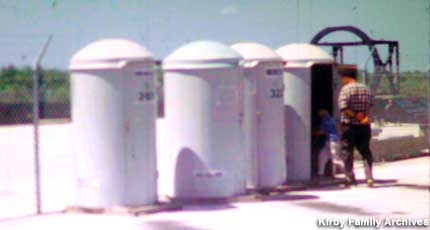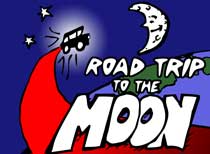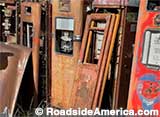
Trunkations
Road trip news, rants, and ruminations by the Editors of RoadsideAmerica.com
Nut Lady Sprouts Anew
November 2, 2019
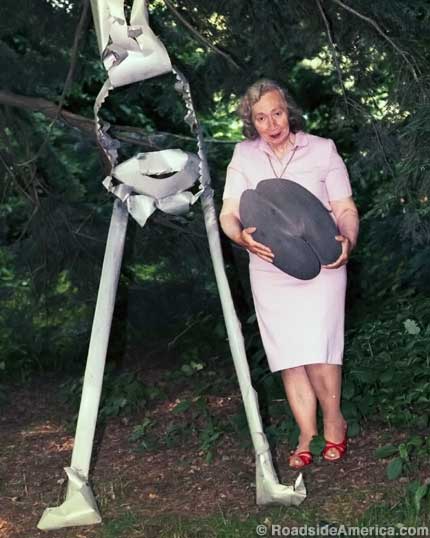
Elizabeth Tashjian, curator of the world’s only Nut Museum, has been gone for 12 years. But like a burst of fresh growth in the Spring, interest in the late, self-titled “Nut Lady” has revived — thanks to a retrospective of her nut paintings, drawings, and sculptures at the Cummings Art Gallery at Connecticut College in New London.
According to the gallery press release, the retrospective “recreates the Nut Museum’s main exhibition gallery [which was the Nut Lady’s dining room] with all of its original furnishings, art, and displays.” It also features a video compilation of Elizabeth’s many appearances on national TV, serenading Johnny Carson, David Letterman, Jay Leno, and others with her self-penned songs, “Nuts Are Beautiful” and “March of the Nuts.”
We know, we know… a roadside attraction without its charismatic owner is like a tree without a nut. But this is still a rare opportunity, for those too young or too sane at the time, to experience the Nut Museum — or at least as near an approximation of it as is possible — before it was closed and bulldozed in 2002.
The retrospective is scheduled to run through December 6.
Sections: Attraction News
Comments Off on Nut Lady Sprouts Anew
Rocky Taconite Bobbles On
September 22, 2019
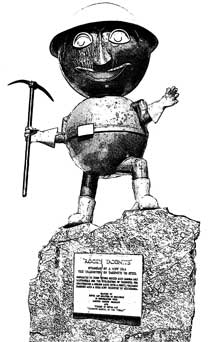
Rocky Taconite, the bulbous metalloid ambassador of Silver Bay, Minnesota, was unveiled as a 12-foot-tall statue in 1964. A few years later a local woman, Marie Benson, decided that Rocky would make a good bobblehead. It was bold thinking, because the modern bobblehead industry was still decades in the future.
Mrs. Benson had no access to injection molding, scanners, or machine tools. Instead, she made a rough model of Rocky in her kitchen using various items that she found around the house, including alphabet macaroni to spell out “ROCKY TACONITE.” She made a mold of her model, then made casts of Rocky in plaster, glued in a spring, and hand-painted every one.
Not many Rocky bobbleheads were produced, but their homely charm left a lasting impression in Silver Bay.
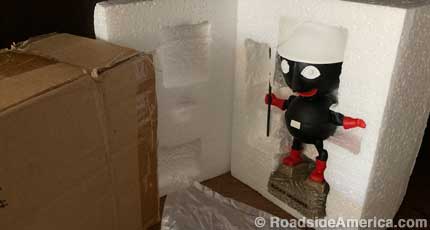
Fast forward to the 21st century. Ruth Koepke, vice-president of the Bay Area Historical Society, was a fan of Rocky — she described him as “a strange little rock man” — and remembered the bobbleheads. She believed that they were worth reviving. A professional company did the work this time, and the bobblehead was made available by phone order.
Despite his makeover, Wobbly Rocky had lost none of his so-weird-he’s-cute appeal. He became a social media celebrity, appearing in photos taken as far away as Vietnam and Australia, carried by people who had never been to Minnesota, or the U.S., and certainly not Silver Bay.
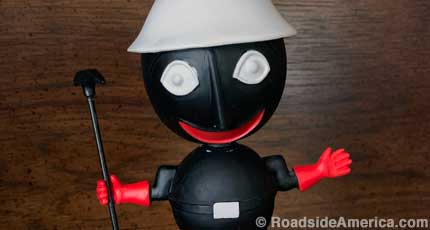
Today, Rocky Taconite is far better known as a bobblehead than as a statue, which is a shame since he’s a really great statue. The modern bobbleheads can be purchased through the Bay Area Historical Society at 218-226-4534.
Sections: Attraction News
Comments Off on Rocky Taconite Bobbles On
Civil War Days, California-Style
August 27, 2019
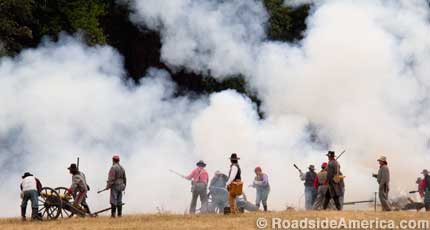
Last month, while wandering the backroads, we spotted a cheery banner advertising: “Civil War Days.” Bit of a shock, because we were on the northern California coast. Was there a famous battle here?
Civil War Days, a full-blown multi-attack reenactment, is held one weekend every July in Duncan Mills — where battalions of Union and Confederate soldiers skirmish with swords, rifles, artillery. There are even cavalry charges. It claims to be one of the largest Civil War reenactments west of the Mississippi, and we don’t doubt it.
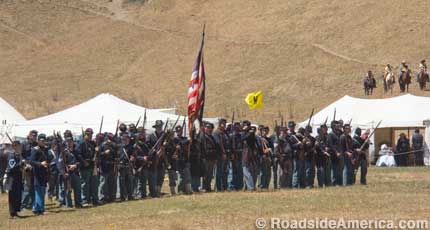
Though not a roadside attraction, we were curious how the Left Coast handles a 150-plus-year old conflict that happened somewhere else (and necessitates waving a few Confederate battle flags). It turned out to be a family-friendly event, no overt politics but plenty of history and meticulous military action, with a large assemblage of enthusiasts camping out for the weekend.
2019 was the 20th anniversary of Civil War Days. Reenactments elsewhere typically occur during cooler months, but the coastal climate and morning fog along the Russian River make for relatively comfortable melees. The landscape is dramatic — a Y-shaped valley, ringed by forest and nestling a grove of coastal redwoods, amid steep scenic hillsides. The property is a privately owned cow pasture, transformed annually by volunteers into a 19th century killing field.
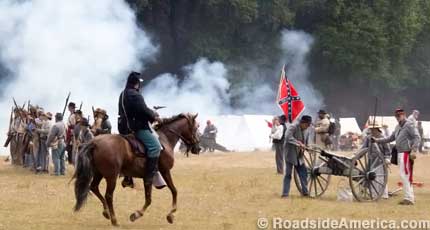
Spectator bleachers line one side of the field; the rest is kept impeccably accurate to the 1860s. Amenities such as portable toilets are hidden behind burlap shrouds. Visitors can wander the fields and military camps during long intervals, but then clear out when the hostilities are about to start. All attendees have the schedule to assure they won’t miss out on something: a vintage baseball game, a mounted artillery demonstration….
There’s an extensive “Sutler” — civilians tagged along behind armies on the move, set up tents and sold their wares. The merchants provide all the accoutrements needed to live in the 19th century — or at least, through the weekend as a re-enactor — clothing, supplies, weapons, food, and souvenirs. Plenty of time to shop between battles, so we headed toward one of the military camps, and heard singing coming from the redwood grove — the Sunday morning worship service. Stepping into the dark, cool grove, we could see that some congregants were on horseback.
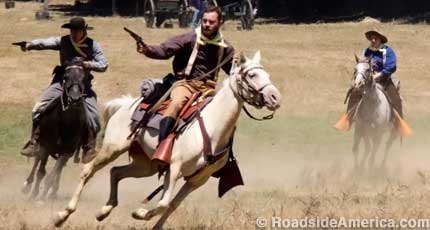
It was soon battle time. From the safety of the bleachers, we had a perfect view. It started with a few scouts and sharpshooters, a couple of mounted patrols, and quickly ramped up. Dozens of soldiers marched from tent camps, muzzle-loaded artillery wheeled into position. Suddenly, hundreds of troops charged, turned in unison, fired rifles and reloaded.
These weren’t set piece recreations of actual historic battles. Loosely sketched maneuvers and entry timetables evolve into the live chaos. The regiments were from California and elsewhere, named after real Civil War units (the 20th Maine Company G, known for their “charges with fixed bayonets” according to a factsheet, is based in Marin County, California).
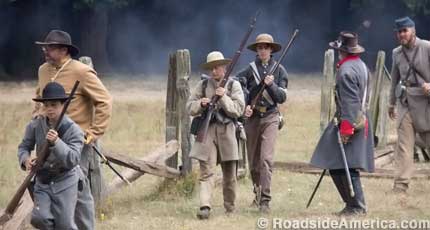
It’s somewhat overwhelming to witness. Chaotic, loud (bring earplugs). There were mounted cavalry sword attacks, and hand to hand combat. At one point, we saw an entire clump of soldiers fall dead from a cannon blast at close range.
We swear, a guy with modern cameras was flushed out of the forest by cavalry and shot. His corpse was out in the brush for a long time.
A horse-drawn ambulance wagon appeared to cart off the wounded. Between battles, in the Union camp, we saw a surgeon’s tent, easy to identify by its pile of bloody amputated (plastic) limbs.
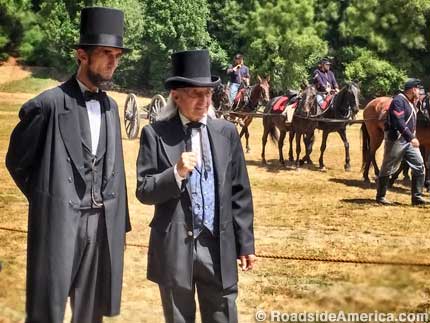
One returning Civil War Days highlight is the reassuring presence of Abraham Lincoln. Our 16th president saunters around the civilian camp and fields with a military entourage. He greets every passerby. He gives speeches. Lincoln presenter Robert Broski brings America’s Great Emancipator to life. He’s a tall, cordial Abe, quietly introspective at the right moments. After one lopsided battle, President Lincoln asked the band to play “Dixie” as consolation for the losing side.
There was another terrific interpreter playing Alexander Stephens. Most people don’t know who Stephens is, let alone what he looked like. Our Stephens endured about five seconds of blank stares before telling us “I’m Alexander Stephens, vice president of the Confederacy!” Well, duh. Stephens shared that he and Lincoln were good friends before the war.
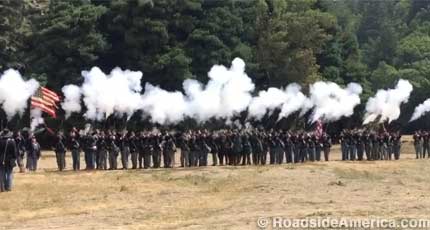
It turns out there was a role for California in the Civil War — it had become a state a decade earlier in 1850, had abolished slavery and remained loyal to the Union. California’s many southern sympathizers were locally ineffective during the war. In 2019, there was a noticeable imbalance between the Blue and Gray — at least 2/3rds of the re-enactors were in Union units. One civilian merchant told us this wasn’t always the case — that some years it was more balanced, and the South would actually win a few fights.
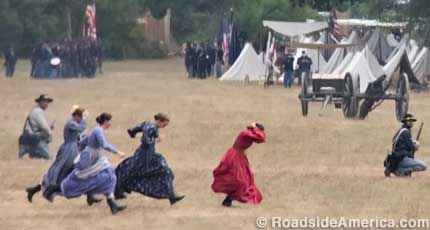
And while the audience in the bleachers is diverse, we’d love to see an African American unit or two on the field of battle. A few Union Army black units formed in the East after the movie “Glory,” and it’s an important aspect to explore (California has its share of Reb and reconsidered landmarks — an hour south of Civil War Days, a local school district was in the middle of renaming their 19th century “Dixie School”).
Women aren’t left out of all the fun — some participate as soldiers and cavalry officers, some as nurses and surgeons, camp merchants, or as distressed civilians who run across the battlefield screaming after the first hail of bullets.
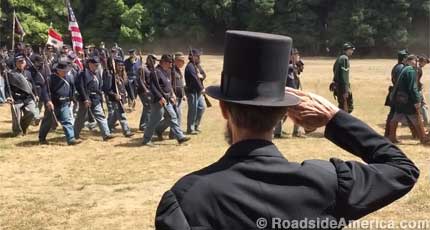
Civil War Days website
Sections: Events
1 Comment »
Space Travel By Car
July 9, 2019
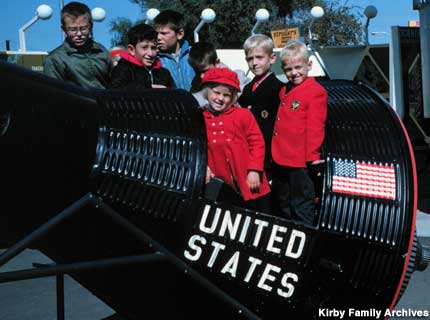
America’s 1950s-70s kids clearly had the wrong impression of when they’d be fitted for spacesuits.
The USSR and the USA were ideological competitors stoking space exploration excitement among their citizens. American schools and the media jammed wee developing brains with images of astronauts, and moon bases with cutaway glimpses of crew quarters, gyms, and play rooms.
It seemed it would be mere years between that first Moon footprint and the first smarmy lunar tourist “Wish You Were Here” postcard sent back to Earth.
It’s been FIFTY YEARS, and we’re still waiting.
Luckily, America’s mighty tourism and entertainment industries stepped in to distract us with space experiences on Earth.
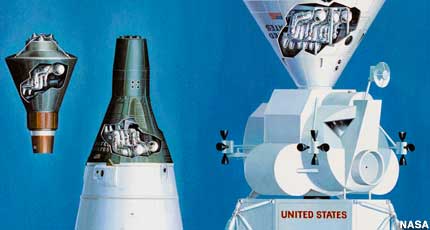
Fantasy trips to the Moon weren’t new — novelist Jules Verne wrote “From the Earth to the Moon” way back in 1865. The fringe fans of early 20th century SF pulp writers found their speculations becoming ever more relevant.
Meanwhile, in the real world, Robert Goddard blasted missiles into the stratosphere when cars barely traveled 40 mph. It was after World War II that advances in technology (and captured German rocket scientists) accelerated development of rockets capable of escaping earth’s gravity.
Science fiction movies throughout the 1950s amped up the scenarios (see the trailer for George Pal’s “Destination Moon,” which finishes by showing a pile of popular magazines containing stories about space travel).
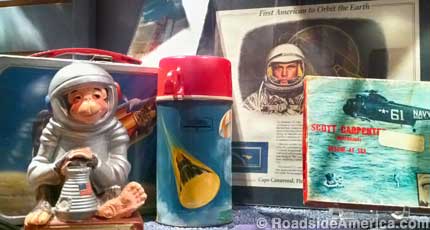
So it wasn’t much of a surprise when Disneyland opened its iconic space travel ride, “Rocket to the Moon,” in 1955, later upgraded to “Flight to the Moon,” then “Flight to Mars” (A near identical “Flight to the Moon” launched at Disney World in 1971). In 1959, even mini-golf attractions, such as Florida’s Goofy Golf, offered putters a space rocket hazard — on their way to the alien cyclops hole.
By the time of the New York World’s Fair (1964-65), NASA was done with Mercury missions, proceeding with Gemini launches, and deep in planning and testing for the moonshot. The Unisphere, the Fair’s central metal globe sculpture, featured paths representing the orbital flights of John Glenn, Yuri Gagarin, and the Telstar communications satellite.
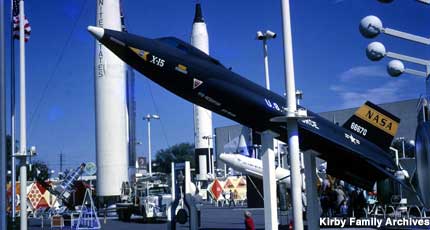
NASA’s Rocket Garden at the Fair let millions of visitors know, among all the international “Peace Through Understanding” exhibits, that everything was A-OK with the space program.
In the mid-1960s, the Kennedy Space Center was an essential Space Coast tourist destination, especially for families trekking to Florida from dozens of states to the north. The public boarded buses outside the sprawling installation, and enjoyed a narrated tour of the assembly, control and launch areas. The site was abuzz with activity, in preparation for actual launches.
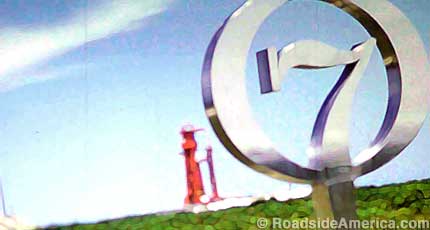
It’s expensive to visit today, but back then it was two bucks per adult. We found an old silent home movie of the bus tour in our scary archive of family films. Shot in early August 1966, you can see NASA workers in short sleeved white shirts, the Vertical Assembly Building (touted then as the “largest building in the world”) and an early Saturn V on the launchpad.
A couple of things to watch for in the film:
At one point, car traffic is backed up behind a huge rocket component on a trailer, stuck behind an overheated NASA security vehicle (Look for the brief shot of the truck with its hood up). The bus drives on the grass to get by.
Even NASA’s advanced design cylindrical porta-potties were a fascination magnet — and where kids could practice their own splashdowns.
1966 Home Movie – On the NASA Cape Kennedy Tour Bus
Roadside America’s Road Trip To The Moon
Sections: Rants, Video
Comments Off on Space Travel By Car
Tips for Better Graveyard Enjoyment
October 28, 2018
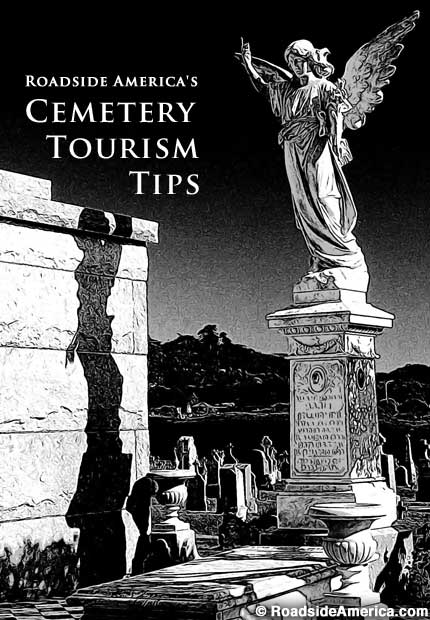
A gravestone resembling an expired parking meter.
A winged goddess grieving for a forgotten President.
The fake final resting place of Mr. Accordion.
Cemeteries are magical places for Roadside America fans, an inexhaustible resource of bizarre memorials, tributes to celebrities, and obscure history characters. From dawn to dusk, the iron gates are open to welcome wanderers into quiet, uncrowded lawnscapes. Graveyard stewards — towns, churches, preservation societies — understand, or at least tolerate, tourists. Visitors should always abide by cemetery rules, and follow our sensible guidelines for boneyard etiquette.
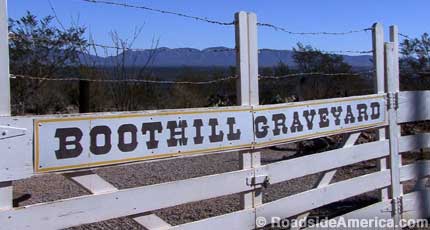
Avoid Disappointment
While many cemeteries are perfectly suitable for spontaneous drop-ins, you’ll benefit from advance research to avoid disappointment. Cemeteries for a particular faith may restrict access on certain days (For example, Wyatt Earp’s grave is in a large Jewish cemetery, gated and locked on Saturdays).
If the cemetery is on private land, you might need permission to enter. In some cases, cemeteries that were once publicly accessible are now only viewable by appointment or official tour (New Orleans grave of the Voodoo Queen, for example). And even some Boot Hills have regular business hours.
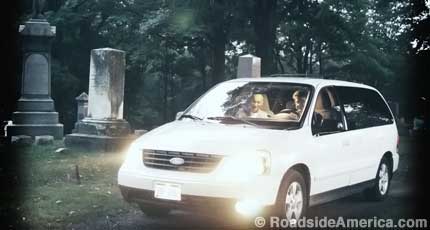
Driving and Parking
Graveyards are never built for high speed traffic and rapid acceleration. Many permit cars to slowly traverse single lane grids and narrow roads. Roadsiders tend to drive too fast (ever mindful we are shorter of breath and one day closer to death), but in cemeteries we exercise extreme caution. A good rule of thumb is to drive at a speed that would not injure whatever preoccupied mourner or groundskeeper you might hit. Slowwwww.
Park as far off to the side as you can, even on a grassy shoulder — but never park on top of a grave (Not even those beneath a road).

Grave Location
We can’t tell you how many hours we’ve squandered trudging up and down rows of markers, looking for a specific resident. While we try to pinpoint locations on Roadside America maps, in big graveyards — particularly “garden” cemeteries with winding roads — finding a single grave can be exhausting. Stop at the cemetery office for directions; chances are that you won’t be the first to ask. Many places are eager to promote their celebrities. Trying to decode “Section 5, Plot 2D” is much easier when someone makes an X on a map.
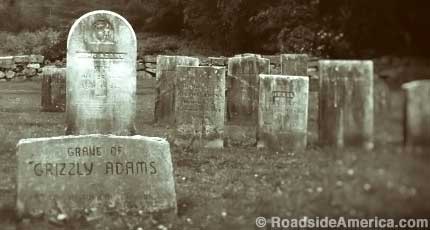
Rest in Peace
While gravestones tend to be permanent, in a fixed spot, they can still elude detection due to surrounding monuments, overgrown foliage, and a low profile. Patiently read the surrounding stones — are there family names? In mid-size cemeteries without an office, keep in mind the year that the person died. Cemeteries grow with time; older graves are usually in one section, newer graves in another.
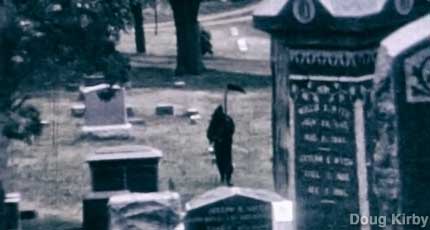
Civilized Creatures
We are not savages. Propriety and good behavior may have long disappeared from theme parks and outlet malls, but these values persist when among our dignified dead. We don’t climb on the monuments. We don’t shout or scream. We don’t shoot an amateur zombie movie while real mourners are present.
This includes pet cemetery mourners.
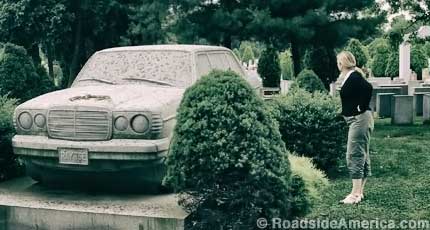
Photography
No one snaps a bunch of selfies during the interment of a departed family member. There are times when photography is the wrong coping mechanism. And yet, cemetery sculptures and markers cry out to us in reedy, ethereal voices: “Look at me! Don’t forget I was here!”
There’s a long tradition of graveyard photography, and simple documentation of a monument or row of markers is usually not controversial. Don’t lug around tripods and elaborate equipment without permission. Some privately owned memorial parks are more proprietary about photography, so watch for advisory signs at the entrance or office.
At most cemeteries, if you stick to the desired gravestone and don’t knock out a bunch of divots in the grass, passing caretakers will likely pay you no notice.
Local photographers may return over and over to artistically capture the same monuments through seasons and years. If you encounter any of these shutter wraiths, no worries — though unnervingly single-minded, they are harmless.
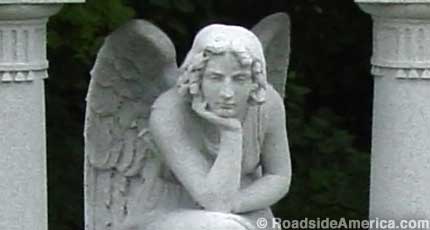
Ethics of Cleaning or Decorating a Grave
Purists will say that you should never touch a grave, and we agree, in the sense that we don’t want to show disrespect. The no-touch policy may be a result of the ravages of vandalism, but also misguided efforts of visitors who show up with industrial cleaning fluid and metal scrub brushes, and end up damaging older, porous tombstones.
We believe it is nondestructive to use a paper towel to carefully brush aside leaves or freshly mown grass clippings. You can probably straighten the little American flag, or better position a plastic lily. That’s it. Now, if it’s a celebrity grave covered with offerings — liquor bottles, lipstick, Mardis Gras beads, plastic superhero figurines — no one will notice a little rearrangement, but you should probably photograph it exactly as is.
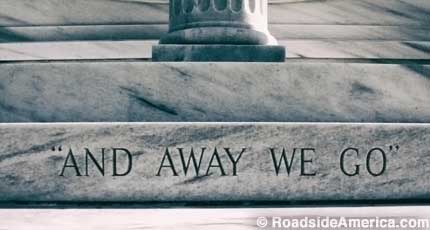
Testing Curse Efficacy
Skeptics and reckless adventurers may be tempted to enact the steps that every urban legend and ghost tale warns against. Look at the face of the shrouded stone lady, sit on the lap of the Wall Street financier on Black Friday, plink the strings of the granite guitar of doom.
We heartily endorse this practice.
Sections: Rants, Trends
Comments Off on Tips for Better Graveyard Enjoyment
The Incredible Indian Head Transplant
April 25, 2018
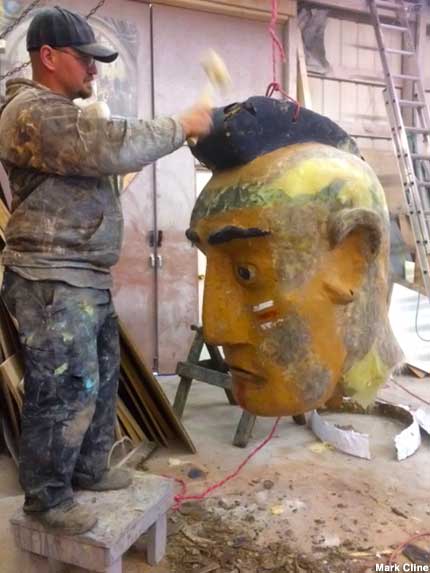
Big John, a giant Indian statue outside Pratt’s BBQ Barn in Kingsport, Tennessee, broke his neck in early April 2018. We quickly informed Mark Cline, fiberglass wizard and creator of Dinosaur Kingdom II, of the calamity. This is his report:
“I called up Pratt’s and spoke with April the manager. Apparently it’s not so easy to find a professional repairman of giant Indians in the Kingsport area. Fortunately, the city was close enough to drive down from my Enchanted Castle Studios in Natural Bridge and get a good look at him.
“The original plan was to hoist the head up with a bucket truck and for me and my crew to fiberglass it back into place. That would have been fine — except that we quickly found that the head was much too heavy to do that safely. The biggest concern was that there was inside structural damage that we didn’t know about, so the best plan of action was to just take the head down, bring it back to my studio, make an exact lightweight fiberglass duplicate, and put the new one back up.
“When we got the head back to the studio I put the head on the scale and it weighed 120 pounds. The new one will weigh about 17 pounds when complete. Due to our super-slammed spring schedule it will be at least a month before we can return and complete the head transplant. As for the original head, we are removing some of the concrete that was inside to lighten it. It was repaired before we began making the duplicate.
“The original head will also be returned to Pratt’s where, who knows, they might auction it to help pay for repairs. But I think it would be a groovy idea to strap it onto one of their vans to ride around when they do their catering gigs… not to mention how great it would be for parades!”
Sections: Attraction News
1 Comment »
« Previous Entries Next Entries »
